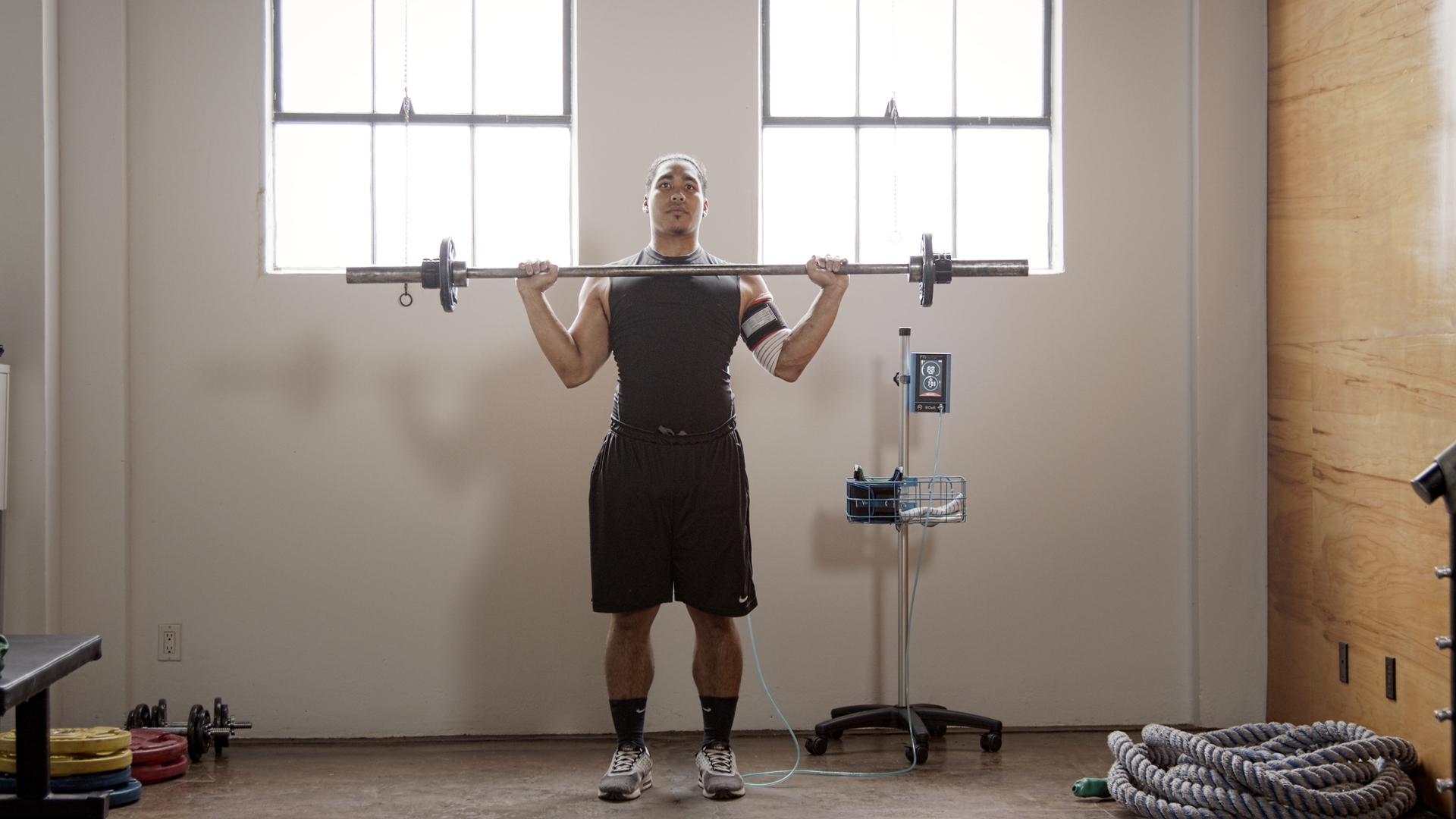Studying the contralateral and proximal effects from BFR therapy is beneficial for clinical and rehabilitation settings. The question of whether or not BFR can stimulate changes proximal to the application of the cuff or in a remote limb is a hot topic of discussion.
In a bench press study by Yasuda (2010) and a squat and hamstring curl study by Abe (2005), the authors demonstrated changes in the pectoralis and gluteal muscles respectively. However, these studies were performed with a frequency that would be difficult or impossible to achieve in a clinical setting. In studies by Madarame (2008) and May (2018), they assessed if the addition of lower extremity exercises with and without BFR would have an effect on an exercising or non-exercising upper extremity. In both studies, the response of the exercising arm was significantly greater with the addition of BFR to the lower extremity exercises. This remote effect looks promising but brings up questions about whether insurance companies would reimburse for the treatment time spent on the lower extremity with an upper extremity pathology.
In a recently published article, Bowman et al. studied whether the addition of BFR to simple, rehabilitation-based exercises would have an effect on the proximal musculature or a contralateral limb. They had healthy participants perform four exercises, twice a week for six weeks. Both groups performed straight leg raises, side-lying abduction, long arc quadricep extension, and standing hamstring curls at 30% of a 1RM on both lower extremities. The BFR group had a cuff on one limb at 80% limb occlusion pressure (LOP), using the Delfi Personalized Tourniquet System. The limb that performed the exercises with BFR demonstrated a significant increase in cross sectional area, strength (knee extension, knee flexion, hip abduction, hip extension, and plantar flexion), and muscular endurance (single leg heel raises) compared to the control group. The non-BFR limb in the BFR group had significant hypertrophy of the thigh, significantly increased peak torque for knee extension, and significantly improved single leg heel raises compared to the control group.
This study is one of the first to assess proximal or remote effects for BFR with exercise in a model that reflects clinical or rehabilitation application. As you might expect, the greatest effects were found in the limb that performed the exercise with BFR. However, this study adds support to the limited evidence for changes in the muscles proximal to the application of the cuff and provides evidence for a potential cross-transfer effect to a non-BFR limb. It looks like there still needs to be an exercise stimulus in the area where the effects are desired. More research is needed to determine the most effective parameters for application. Let's continue to make rehab exercises more effective!
- Bowman, Eric N., et al. “Proximal, Distal, and Contralateral Effects of Blood Flow Restriction Training on the Lower Extremities: A Randomized Controlled Trial.” Sports Health, Jan. 2019, p. 1941738118821929.
- Madarame, Haruhiko, et al. “Cross-Transfer Effects of Resistance Training with Blood Flow Restriction.” Medicine and Science in Sports and Exercise, vol. 40, no. 2, Feb. 2008, pp. 258–63.
- May, Anthony K., et al. “Lower Body Blood Flow Restriction Training May Induce Remote Muscle Strength Adaptations in an Active Unrestricted Arm.” European Journal of Applied Physiology, vol. 118, no. 3, Mar. 2018, pp. 617–27.
- Abe, et al. Skeletal Muscle Size and Circulating IGF-1 Are Increased after Two Weeks of Twice Daily “KAATSU” Resistance Training..pdf.
- Yasuda, T., et al. “Effects of Low‐intensity Bench Press Training with Restricted Arm Muscle Blood Flow on Chest Muscle Hypertrophy: A Pilot Study.” And Functional Imaging, Wiley Online Library, 2010, http://onlinelibrary.wiley.com/doi/10.1111/j.1475-097X.2010.00949.x/full.


